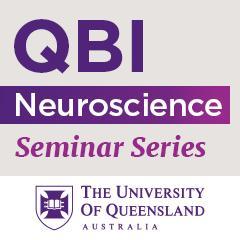The twisted link between a dual function glutamate transporter and Episodic Ataxia

Speaker: Professor Renae Ryan
School of Medical Sciences
The University of Sydney
Title: The twisted link between a dual function glutamate transporter and Episodic Ataxia
Abstract: Excitatory Amino Acid Transporters (EAATs) regulate excitatory neurotransmission by transporting glutamate into cells, mostly glia, to terminate neurotransmission and to avoid neurotoxicity. EAATs also conduct chloride ions (Cl-) via a channel-like process that is thermodynamically uncoupled from transport. The molecular mechanisms that allow these dual-function transporters to carry out two seemingly contradictory roles, and the physiological role of Cl- conductance of the EAATs, are not clear. I will describe the cryo-electron microscopy structure of a glutamate transporter homologue in an open-channel state, revealing an aqueous-accessible Cl- permeation pathway that is formed during the transport cycle1 and discuss the impact of a series of mutations in EAAT1 that have been identified in patients with the neurological disease episodic ataxia type 6 (EA6). By studying EAAT1 function in vitro and in vivo using a Drosophila melanogaster model of locomotor behaviour, our results indicate that mutations that lead to functional glutamate transport but either increased OR decreased Cl- channel activity contribute to the pathology of EA6, highlighting the importance of Cl- homeostasis in glial cells for proper central nervous system function2. Our findings provide insight into the mechanism by which glutamate transporters support their dual functions and provides a framework for the rational development of therapeutics that can differentially modulate substrate transport and/or channel properties for the treatment of neurological disorders caused by EAAT dysfunction, such as Episodic Ataxia.
1. Ichia Chen, Shashank Pant, Qianyi Wu, Rosemary Cater, Meghna Sobti, Robert Vandenberg, Alastair G. Stewart, Emad Tajkhorshid, Josep Font, Renae Ryan (2021) Glutamate transporters have a chloride channel with two hydrophobic gates Nature, 591(7849):327-331
2. Qianyi Wu, Azman Akhter, Shashank Pant, Eunjoo Cho, Jin Xin Zhu, Alastair Garner, Tomoko Ohyama, Emad Tajkhorshid, Donald J. van Meyel, Renae M. Ryan (2022) Ataxia-linked SLC1A3 mutations alter EAAT1 chloride channel activity and glial regulation of CNS function. Journal of Clinical Investigation 32(7):e154891.
About Neuroscience Seminars
Neuroscience seminars at the QBI play a major role in the advancement of neuroscience in the Asia-Pacific region. The primary goal of these seminars is to promote excellence in neuroscience through the exchange of ideas, establishing new collaborations and augmenting partnerships already in place.
Seminars in the QBI Auditorium on Level 7 are held on Wednesdays at 12-1pm, which are sometimes simulcast on Zoom (with approval from the speaker). We also occassionally hold seminars from international speakers via Zoom. The days and times of these seminars will vary depending on the time zone of the speaker. Please see each seminar listed below for details.



